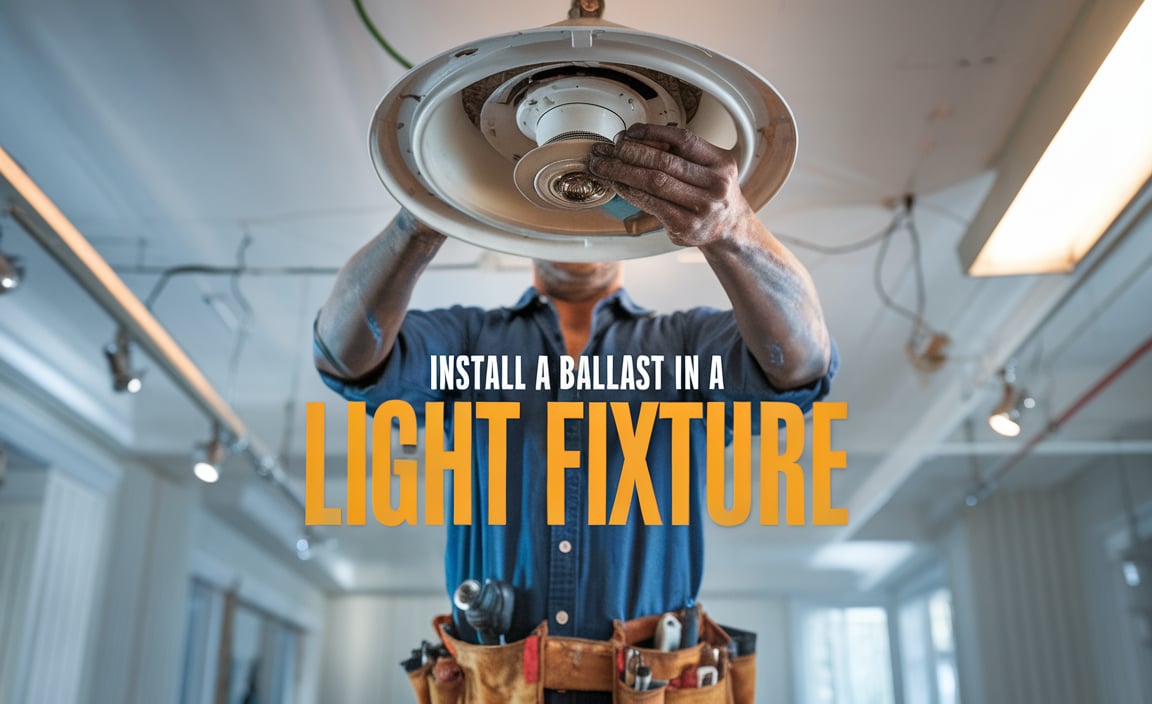Winter is coming, and that means it’s time to prepare your outdoor faucets. Have you ever experienced a frozen pipe during the cold months? It’s not fun! Luckily, wrapping outdoor faucets for winter is an easy task that can save you a lot of trouble later.
Imagine stepping outside during a snowstorm and realizing your faucet is frozen solid. What a headache! It can lead to leaks or even expensive repairs. So, why not learn how to wrap outdoor faucets the right way?
It’s simple and takes just a few minutes. Plus, it’s a great way to protect your home. Many people forget about this crucial step in their winter prep. Did you know that a small effort now can prevent big issues later? It’s true!
In this article, you will discover easy steps to wrap outdoor faucets for winter. You’ll feel like a pro as you keep your plumbing safe from the cold. Let’s dive into the steps you need to take!
How To Wrap Outdoor Faucets For Winter: Step-By-Step Guide

How to Wrap Outdoor Faucets for Winter
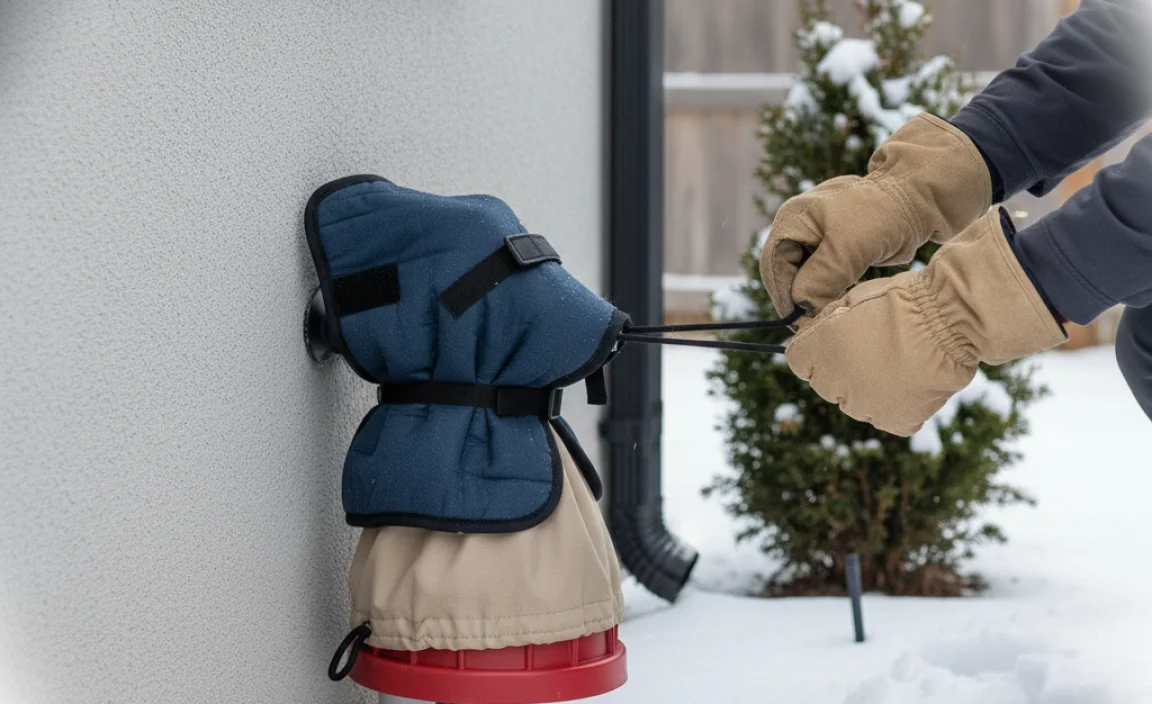
As winter approaches, protecting outdoor faucets becomes essential. Uncared-for faucets can freeze and break. Start by turning off the water supply to your outdoor faucet. Next, wrap it with foam pipe insulation. Cover it with a towel or old blanket for extra warmth. Lastly, secure it with tape to keep it in place. Did you know a simple wrap can save you from costly repairs? Stay warm and dry this winter!
Understanding the Importance of Proper Faucet Insulation
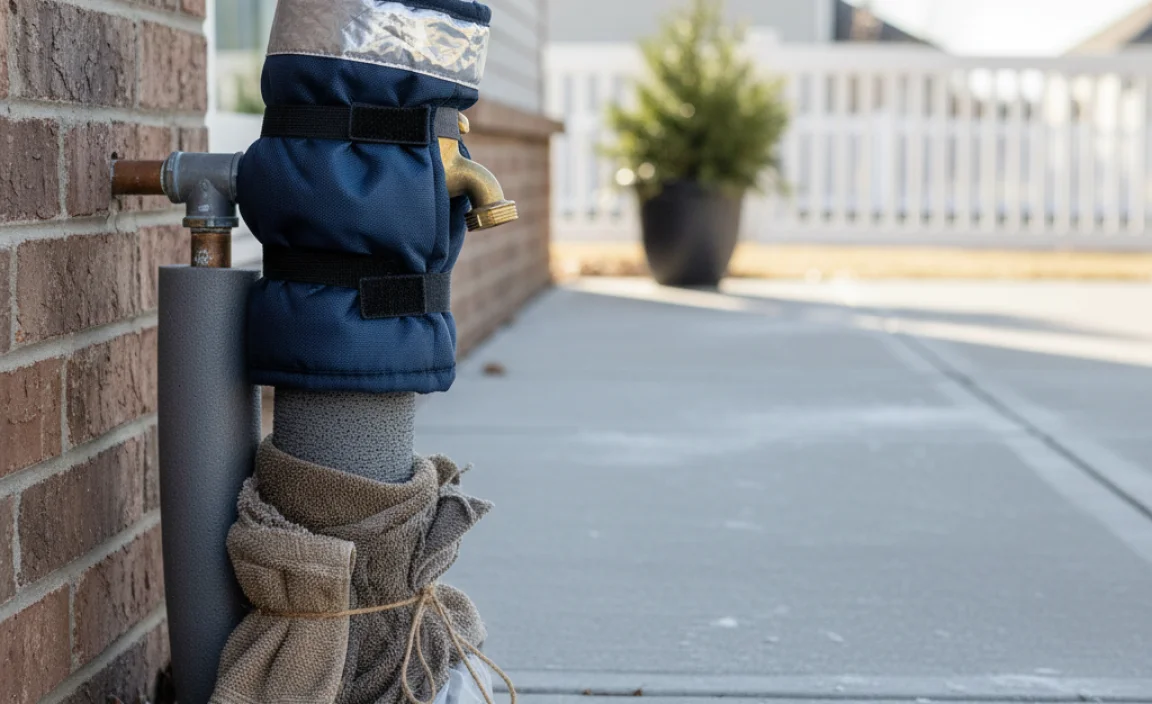
Prevent freezing and bursting pipes. Save on costly repairs and water damage.
Keeping your outdoor faucets cozy during winter is crucial. If you ignore this, frozen pipes can burst like balloons at a party! The mess and costs can add up quickly. You’d rather spend money on hot cocoa than costly repairs, right? Proper insulation is like giving your faucet a warm sweater. Protect against freezing and save yourself from dealing with water damage. Remember, a little prep now saves a mountain of trouble later!
| Benefit | Description |
|---|---|
| Prevent Bursting | Frozen pipes can burst. Insulation helps avoid this! |
| Save Money | A few dollars on insulation can save you big repair bills. |
Materials Needed for Wrapping Outdoor Faucets
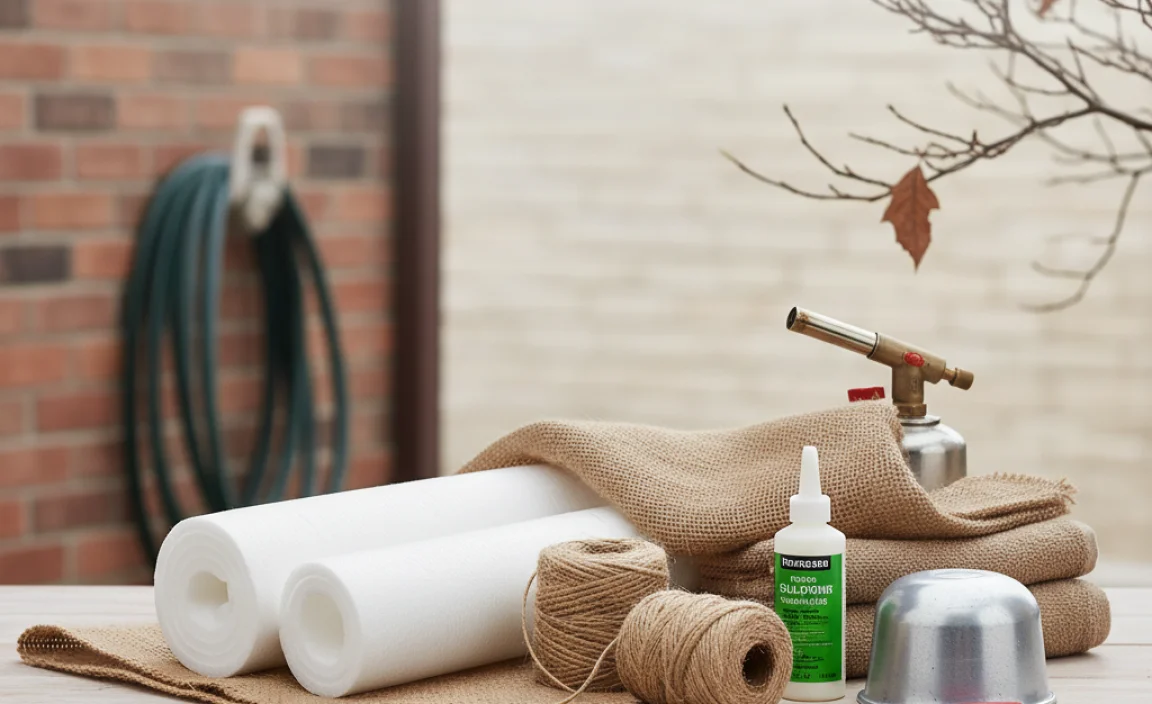
Insulation materials (foam, fabric, or pipe sleeves). Additional supplies (tape, zip ties, or plastic bags).
First, gather your insulation materials. You can use foam, fabric, or pipe sleeves to keep your faucets cozy. Think of them like blankets for your pipes. Next, make sure you have some additional supplies. Tape, zip ties, or plastic bags will hold everything in place. You wouldn’t want your faucet protection slipping—it’s not trying to escape from a scary winter!
| Material | Purpose |
|---|---|
| Foam | Insulates the faucet |
| Fabric | Provides warmth |
| Pipe Sleeves | Fits directly over the faucet |
| Tape | Keeps insulation secure |
| Zip Ties | Ensures everything stays together |
| Plastic Bags | Extra layer of protection |
Step-by-Step Guide to Wrapping Your Outdoor Faucets
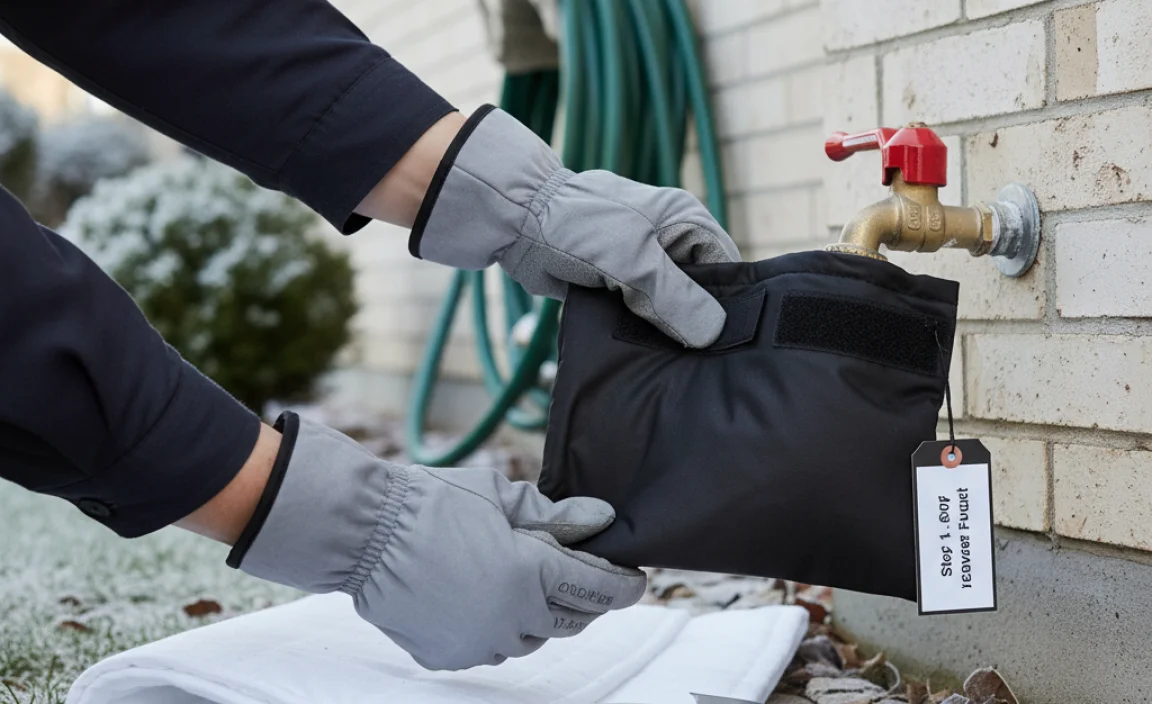
Preparing the faucet and surrounding area. Detailed wrapping techniques for various insulation types.
Start by getting your faucet ready. Clear away any dirt or leaves around it. This helps you see the faucet clearly and ensures the insulation sticks well. For wrapping, choose from different materials like foam, tape, or even an old towel. Wrap the faucet tightly, covering all parts. Secure it with tape. This keeps cold air out and protects your faucet from freezing.
What materials can I use to wrap my outdoor faucet?
You can use foam insulation, heat tape, or an old towel. Each material helps keep your faucet safe from the cold.
Steps to wrap your faucet:
- Clear the area.
- Choose your wrapping material.
- Wrap tightly around the faucet.
- Secure with tape.
Tips for Ensuring Maximum Insulation Effectiveness
Checking for leaks and drafts. Recommended thickness and layers for insulation.
Keeping outdoor faucets safe in winter is important. First, check for leaks and drafts. Any small gaps can let cold air in. Sealing these with caulk or tape helps keep the cold out. Use insulation that is thick enough to block the cold. Foam or fiberglass are good choices. Layering materials can also improve warmth. Using two layers of insulation is better than one.
How thick should insulation be?
Insulation should be at least 2 inches thick for best protection from winter’s chill.
Tips for Insulation:
- Check for leaks before applying insulation.
- Use at least two layers for maximum warmth.
- Choose materials that resist water damage.
Common Mistakes to Avoid When Wrapping Faucets
Overlooking unexposed pipes. Inadequate sealing methods.
Wrapping outdoor faucets is important, but skipping some steps can lead to trouble. First, don’t forget about those sneaky unexposed pipes! They need protection, too, or they might freeze, just like your favorite ice cream. Next, sealing methods matter. Duct tape and wishful thinking won’t cut it! Use proper materials for snug sealing. Your faucets will thank you! Remember, a warm faucet is a happy faucet—even if it doesn’t say much.
| Mistake | Solution |
|---|---|
| Overlooking unexposed pipes | Wrap or insulate them |
| Inadequate sealing methods | Use foam or quality tape |
Alternative Solutions for Protecting Outdoor Faucets
Use of heating cables or tape. Installing outdoor faucet covers.
There are several ways to protect your outdoor faucets during winter. Using heating cables or tape can keep the pipes warm. This helps prevent freezing and bursting. Also, installing outdoor faucet covers adds an extra layer of protection. A cover keeps cold air away while trapping warmth. Both methods are easy to use and effective.
What are heating cables and how do they work?
Heating cables warm the pipes, keeping water inside liquid. You simply wrap them around the faucet or pipes. They plug in and provide heat when needed.
Benefits of outdoor faucet covers:
- Easy to install
- Affordable and reusable
- Provides insulation
When to Consult a Professional
Identifying complex plumbing issues. Installations for extreme climates.
Sometimes, it’s tricky to handle plumbing problems. If you see leaks or cracks, it’s best to call an expert. They can fix complex plumbing issues quickly. If you live in a very cold area, special installations may be needed. This helps keep your pipes safe from ice damage. Always remember, if you’re unsure, asking for help is smart!
When should you call a plumber?
Consider calling a plumber if:
- You find big leaks that you can’t control.
- Cracks in your pipes seem serious.
- Your area has extreme winters that need special care.
Taking these steps can protect your home from winter damage.
Conclusion
In conclusion, wrapping outdoor faucets for winter protects them from freezing. You should drain the faucet, then cover it with an insulating material like foam. Don’t forget to secure it tightly! This simple task can save you from costly repairs. For more tips on winterizing your home, keep reading and stay prepared for the colder months!
FAQs
What Materials Are Best For Wrapping Outdoor Faucets To Prevent Freezing In Winter?
To wrap outdoor faucets and keep them from freezing, you can use several materials. Insulation foam or pipe wrap is great because it keeps the cold out. Another option is old towels or blankets. You can also use plastic bags to cover the faucet, but make sure to secure them with tape. Just remember to remove everything in spring!
How Do I Properly Insulate Outdoor Faucets To Protect Them From Cold Weather?
To protect outdoor faucets from freezing, start by turning off the water to the faucet. Next, you can wrap the faucet with foam insulation tape or a towel. This keeps the cold air away. Finally, cover it with a plastic or rubber faucet cover for extra warmth. Remember to check it each winter to make sure it’s still snug!
Should I Remove Or Cover Any Hoses Attached To Outdoor Faucets During Winterization?
Yes, you should remove any hoses attached to outdoor faucets. If you leave them on, water can get stuck and freeze. Freezing water can break the hoses and the faucet. So, it’s best to take them off and store them inside.
What Are The Signs That An Outdoor Faucet Has Frozen, And How Can I Prevent It?
If an outdoor faucet has frozen, you might notice that water won’t come out when you turn it on. You may also see ice or frost on the faucet. To prevent this, make sure to turn off the water to the faucet in winter. You can also wrap the faucet with insulation or use a cover. This keeps it warm and helps stop freezing.
Are There Any Specific Techniques For Wrapping Faucets In Areas With Extreme Winter Temperatures?
Yes, there are good ways to keep faucets safe in really cold weather. First, you can wrap the faucet with a special foam or pipe insulation. Make sure to cover all parts well. You can also use plastic bags filled with towels for extra warmth. Finally, letting a little water drip can help stop freezing!







